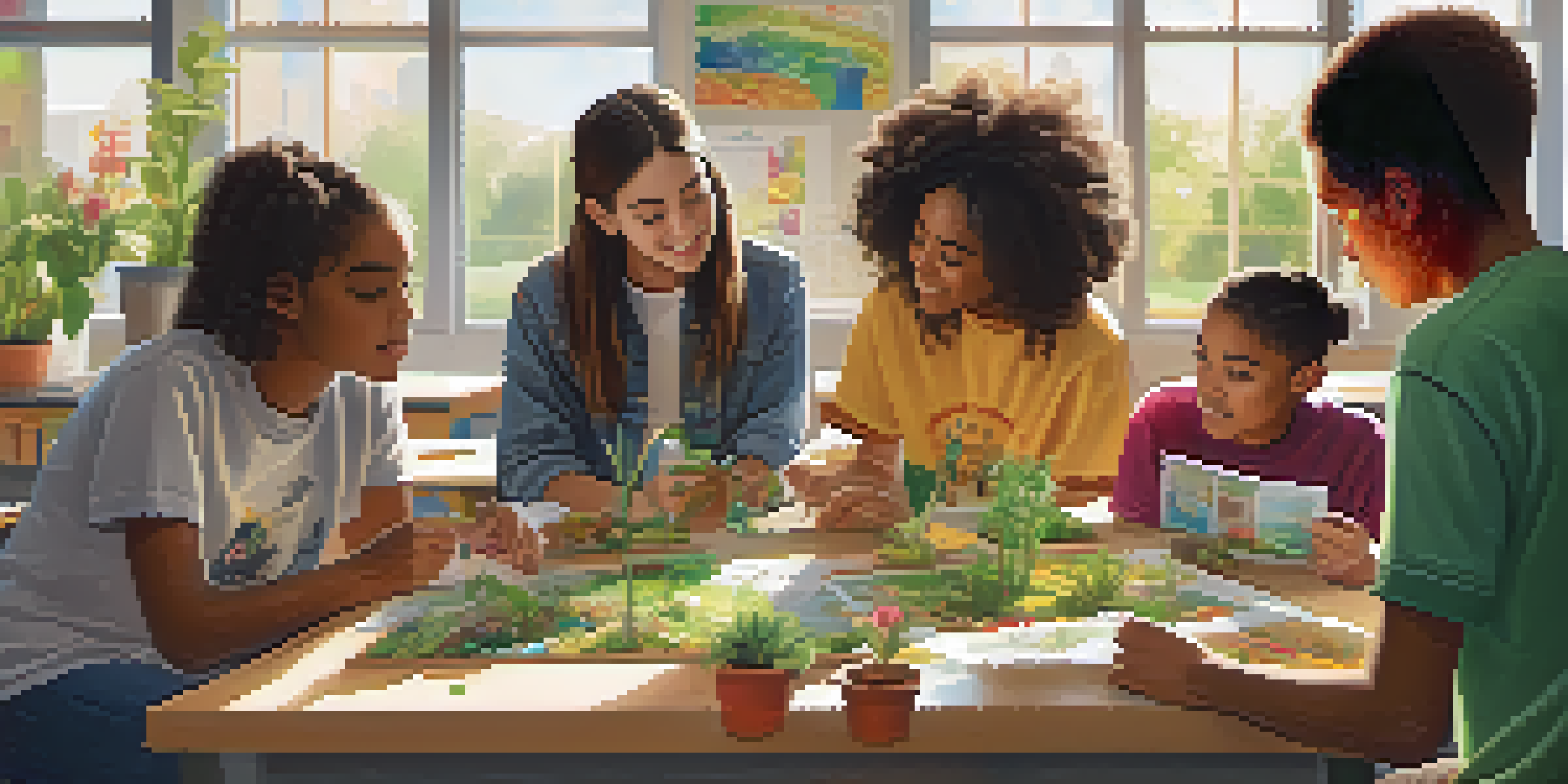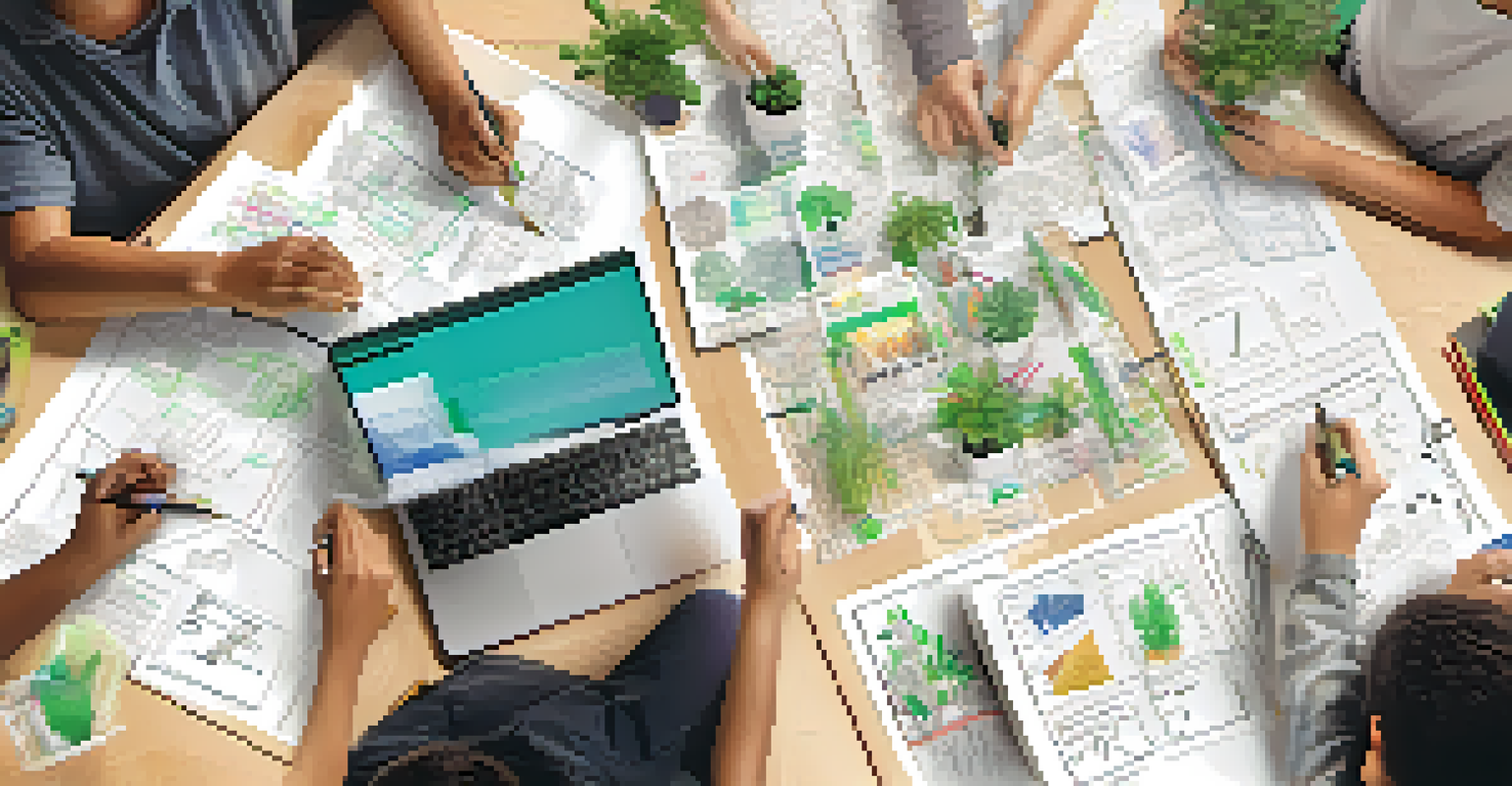Using Project-Based Learning to Enhance Interdisciplinary Skills

Understanding Project-Based Learning and Its Benefits
Project-Based Learning (PBL) is an educational approach where students engage in real-world projects to gain deeper knowledge. Instead of traditional lectures, students explore topics through hands-on experiences, making learning more relevant and impactful. This method encourages critical thinking, collaboration, and communication skills, which are essential for success in various fields.
Learning is not a spectator sport. Students do not learn much just sitting in classes listening to teachers, memorizing pre-packaged assignments, and spitting out answers. They must talk about what they are learning, write about it, and relate it to past experiences.
One of the main benefits of PBL is that it allows students to take ownership of their learning. They can choose projects that interest them, leading to increased motivation and engagement. This sense of agency not only enhances their learning experience but also helps them develop a lifelong love for learning.
Moreover, PBL promotes interdisciplinary skills by integrating different subjects into a single project. For example, a project on renewable energy can combine science, math, and environmental studies, allowing students to see the connections between disciplines while solving real-world problems.
The Role of Interdisciplinary Skills in Today's World
In an increasingly complex world, interdisciplinary skills are more crucial than ever. These skills enable individuals to think critically, solve problems, and innovate by drawing on knowledge from various fields. For instance, a successful entrepreneur often combines insights from economics, marketing, and technology to create a viable business model.

Employers today seek individuals who can work across disciplines, adapt to changing environments, and collaborate with diverse teams. Interdisciplinary skills prepare students for this reality by teaching them how to integrate knowledge and perspectives from different areas. This skill set not only enhances employability but also fosters a more holistic understanding of the world.
PBL Boosts Student Engagement
Project-Based Learning allows students to take ownership of their education, increasing motivation through hands-on, real-world projects.
By engaging in PBL, students naturally cultivate these interdisciplinary skills. As they work on projects that require input from multiple subject areas, they learn to communicate effectively with peers from different backgrounds and to approach problems from various angles.
How PBL Encourages Critical Thinking and Problem Solving
Critical thinking is at the heart of project-based learning. When students tackle real-world problems, they must analyze information, evaluate different perspectives, and develop innovative solutions. This process not only enhances their understanding of the subject matter but also equips them with essential problem-solving skills that they can apply in everyday life.
The greatest danger in times of turbulence is not the turbulence; it is to act with yesterday's logic.
For example, consider a project where students must design a sustainable community garden. They would need to research various plants, understand environmental impacts, and collaborate with local stakeholders. This multifaceted approach requires them to think critically and creatively, making decisions that can lead to positive outcomes.
Through PBL, students encounter challenges that require them to adapt and revise their strategies, further honing their critical thinking abilities. This iterative process not only builds resilience but also prepares them for the complexities of real-world situations.
Fostering Collaboration and Communication Skills Through PBL
Collaboration is a key component of project-based learning. Students often work in teams, where they must communicate effectively, share ideas, and support one another to achieve common goals. This collaborative environment not only builds strong interpersonal skills but also teaches students the value of teamwork.
For instance, during a group project on climate change, students might divide tasks based on individual strengths while learning to respect different viewpoints. This experience helps them navigate conflicts, negotiate solutions, and ultimately reach consensus, all of which are vital skills in both academic and professional settings.
Interdisciplinary Skills Matter
PBL cultivates critical interdisciplinary skills that are essential for problem-solving and collaboration in today's complex work environment.
By regularly engaging in collaborative projects, students become adept at articulating their thoughts and listening to others. These communication skills are essential for success in any career, as they enable individuals to convey ideas clearly and work effectively with diverse groups.
Enhancing Creativity and Innovation Through Real-World Projects
Project-based learning inherently fosters creativity and innovation. When students are given the freedom to explore their interests within a project, they are more likely to think outside the box and experiment with new ideas. This creative exploration is crucial for developing innovative solutions to complex problems.
For example, a project that encourages students to invent a new product can lead to a range of creative outcomes. Students might brainstorm unique designs, consider market needs, and develop prototypes, allowing them to express their creativity while applying theoretical knowledge in a practical context.
By promoting a culture of creativity, PBL not only prepares students for future challenges but also encourages them to become lifelong learners who are open to new possibilities. This mindset is essential in a world where change is constant and innovation drives progress.
Assessment Strategies for Project-Based Learning
Assessing student performance in project-based learning can be challenging, but it is essential for ensuring educational goals are met. Traditional testing may not accurately reflect a student's understanding or skills developed during a project. Instead, educators can use a variety of assessment strategies, such as peer evaluations, self-reflections, and presentations.
For instance, a teacher might ask students to present their projects to the class, allowing them to showcase their knowledge and skills while receiving feedback from peers. This not only enhances their communication skills but also encourages constructive criticism and learning from one another.
Assessment in PBL is Essential
Effective assessment strategies in PBL, such as peer evaluations and presentations, provide a comprehensive view of student learning beyond traditional tests.
Additionally, rubrics can be used to evaluate both the process and the final product, ensuring that students are recognized for their collaborative efforts and critical thinking. By employing diverse assessment methods, educators can provide a more comprehensive picture of student learning in a PBL environment.
Best Practices for Implementing PBL in the Classroom
Implementing project-based learning successfully requires careful planning and preparation. Educators should begin by clearly defining the project goals and outcomes, ensuring they align with the curriculum. This clarity helps students understand the purpose of their work and how it connects to their learning.
It's also essential to provide ongoing support throughout the project. Teachers can facilitate discussions, offer resources, and guide students in problem-solving, helping to create a safe environment for exploration and innovation. Encouraging student autonomy while being available for assistance strikes a balance that fosters independence and collaboration.

Finally, reflecting on the project process is crucial for both students and educators. After completing a project, discussing what worked well, what challenges were faced, and what could be improved helps reinforce learning and encourages growth in future projects. This reflective practice is a cornerstone of effective project-based learning.